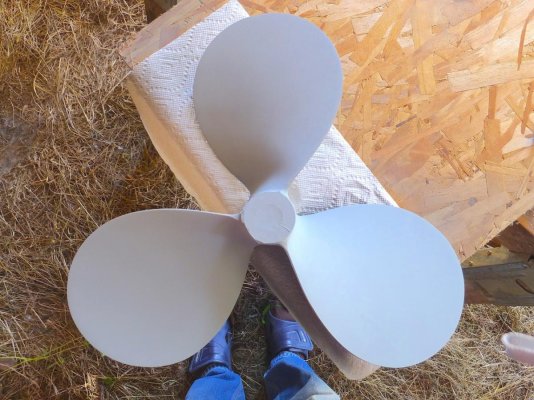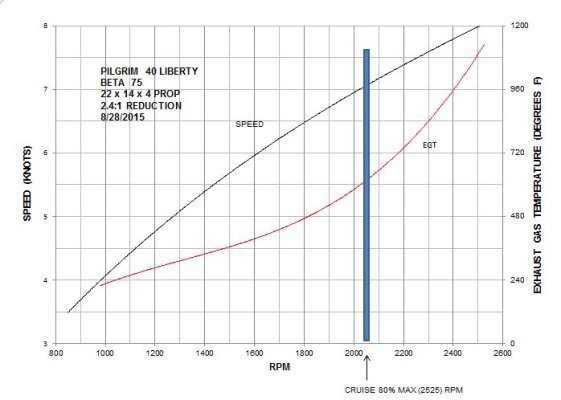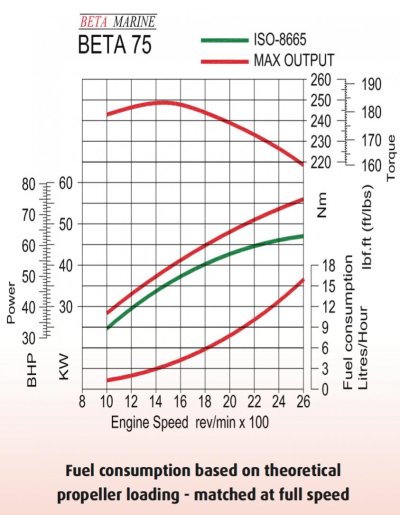Many:
Both engines would use about the same fuel at the same load even though one was running with lower percent load than the other. To reasonable estimate 4 stroke diesels produce 20 Hp per gallon of fuel per hour. Electronic engines may be a bit better.
Both engines would use about the same fuel at the same load even though one was running with lower percent load than the other. To reasonable estimate 4 stroke diesels produce 20 Hp per gallon of fuel per hour. Electronic engines may be a bit better.

 Hull speed is hull speed. anything more is waste of power/fuel. Eric nails common sense.
Hull speed is hull speed. anything more is waste of power/fuel. Eric nails common sense. 


